Gallery
A collection of some of my favorite plots and fun animations
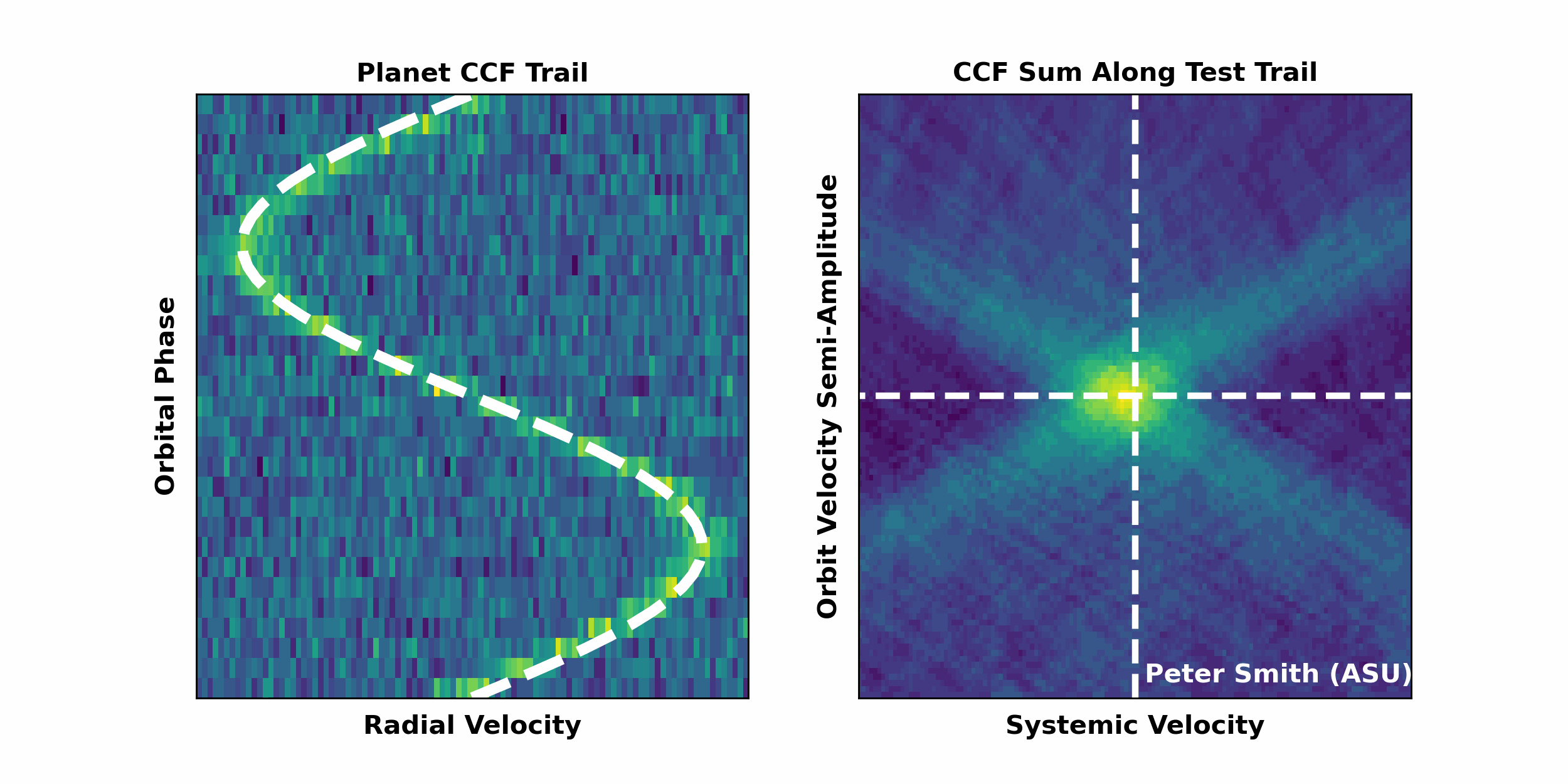
CCF Map
Left: By cross correlating a model spectrum with noisy data along possible radial velocities and at different times, we can see the planet cross-correlation signal trace out its orbital path in time. Right: The CCF signal strength at a given exposure is relatively low, but we can build signal by summing correlation coefficients over the planet's entire orbit. This requires acurately knowing the planet's orbital velocity semi-amplitude as well as any systematic velocity offset. Different values for these quantities will trace out different orbital paths in velcoity-phase space. A peak in the right panel will occur for the path that most accurately describes the planet's velocity in time.
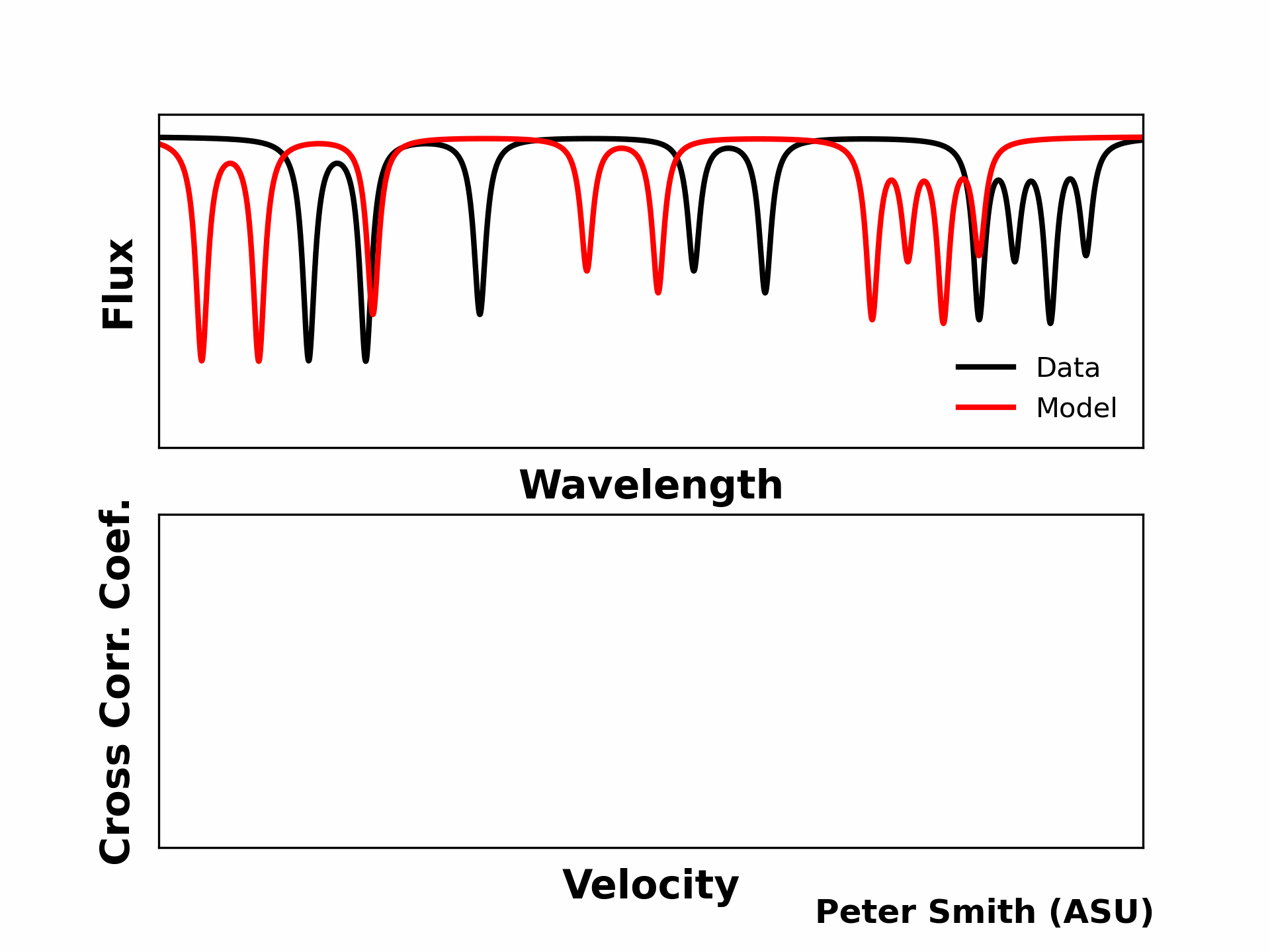
Cross-correlation
Top: We Doppler shift a model planet spectrum (red) along a grid of possible velocities and compare to the data (black). Bottom: By recording the correlation coefficient as a function of velocity, we can search for a peak in the cross-correlation function at the planet's line-of-sight radial velocity.
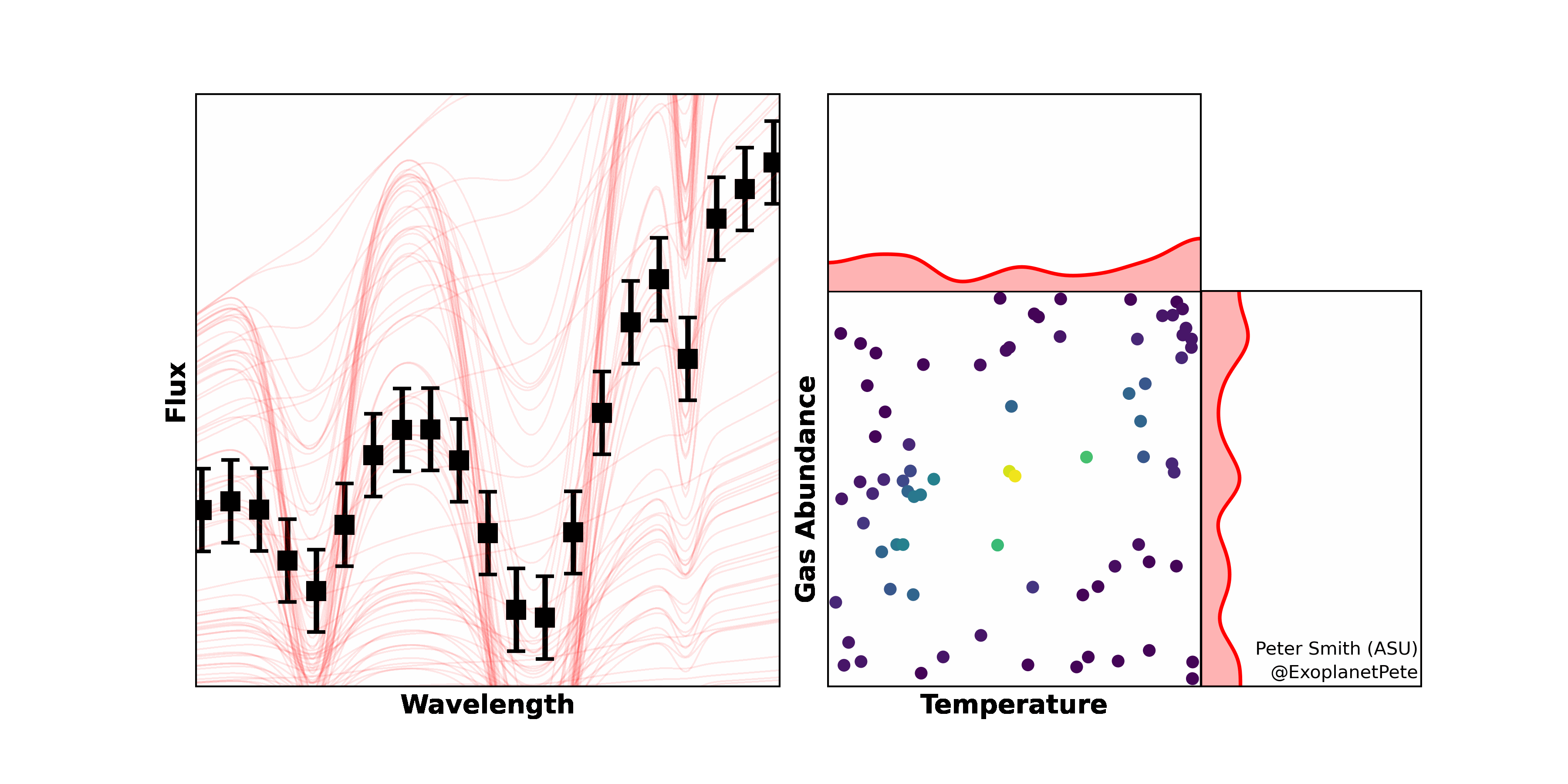
Atmospheric Retrieval
To place robust, quantitative constraints on the properties of exoplanets and their atmospheres, we use statistical tools called "retrievals" to explore and evaluate the model parameter space. Illustrated here is an algorithm called Nested Sampling, which sets aside the lowest likelihood point and draws another randomly located in an ellipsoid containing all the other points. This repeats until the retrieval converges to the model values that best describe the data.
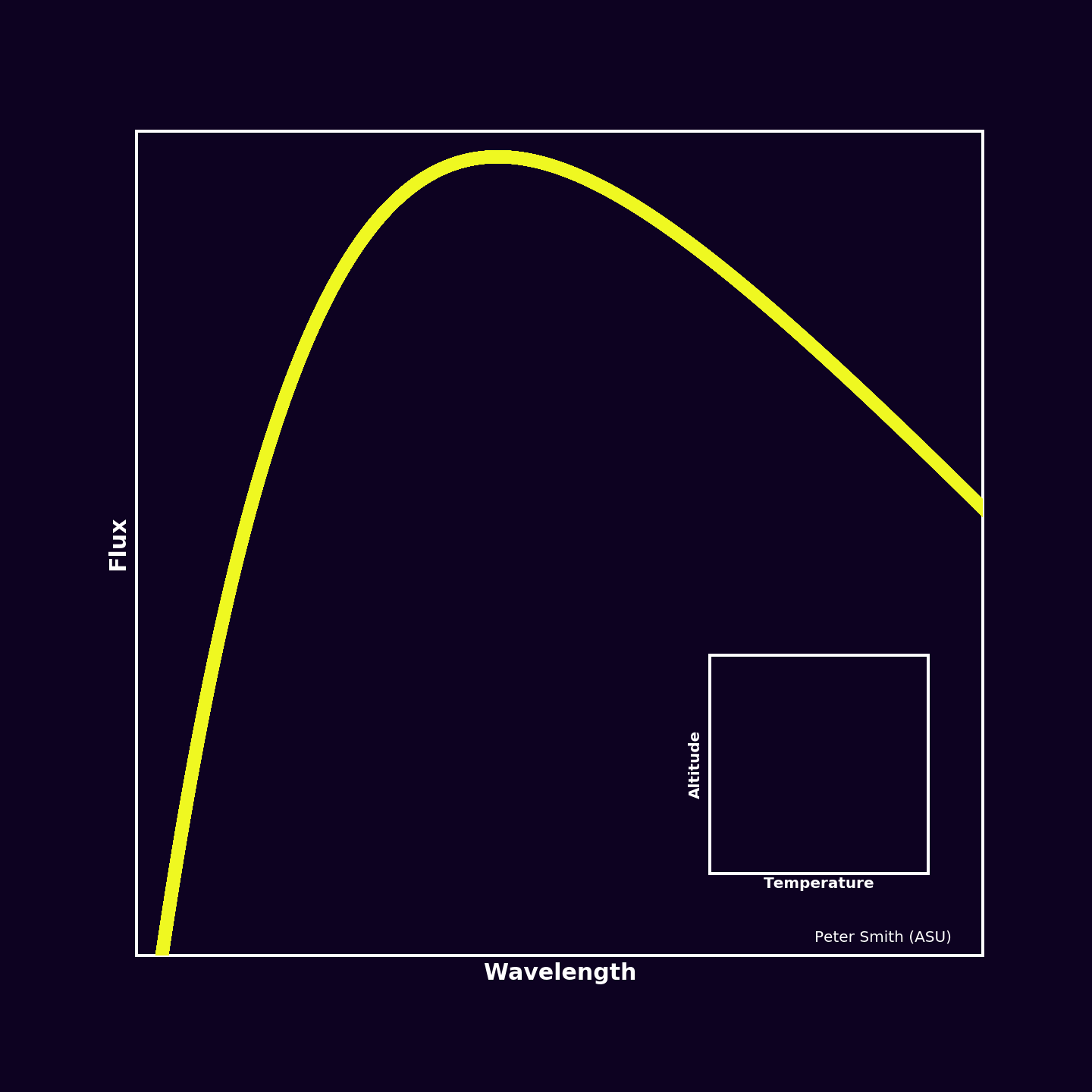
Absorption Spectrum
Light emits from the planet surface like a blackbody, and as it moves higher through the atmosphere, light is absorbed, resulting in the top of atmosphere spectrum we can observe. Light is fully absorbed at different points in the atmosphere at different wavelengths, so we can see a wide range of temperatures and altitudes in the atmosphere.
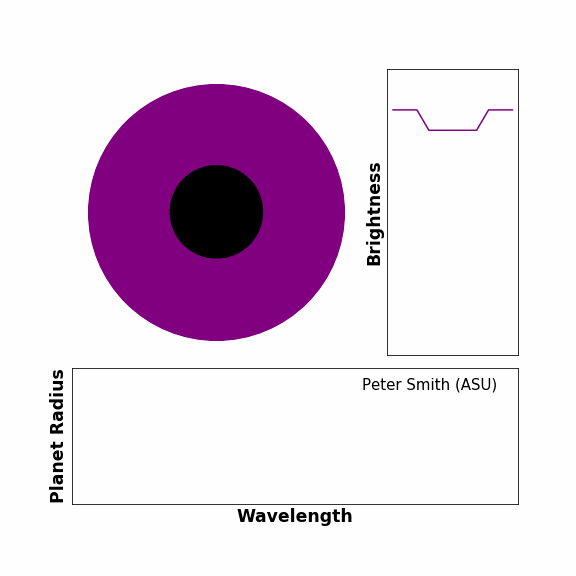
Exoplanet Transmission Spectrum
Exoplanet atmospheres are opaque at some wavelengths and clear in others based on their composition. A more opaque atmosphere causes the planet to block more starlight in transit and appear larger. Transmission spectra measure planet radius at different wavelengths to learn about the composition of atmospheres.
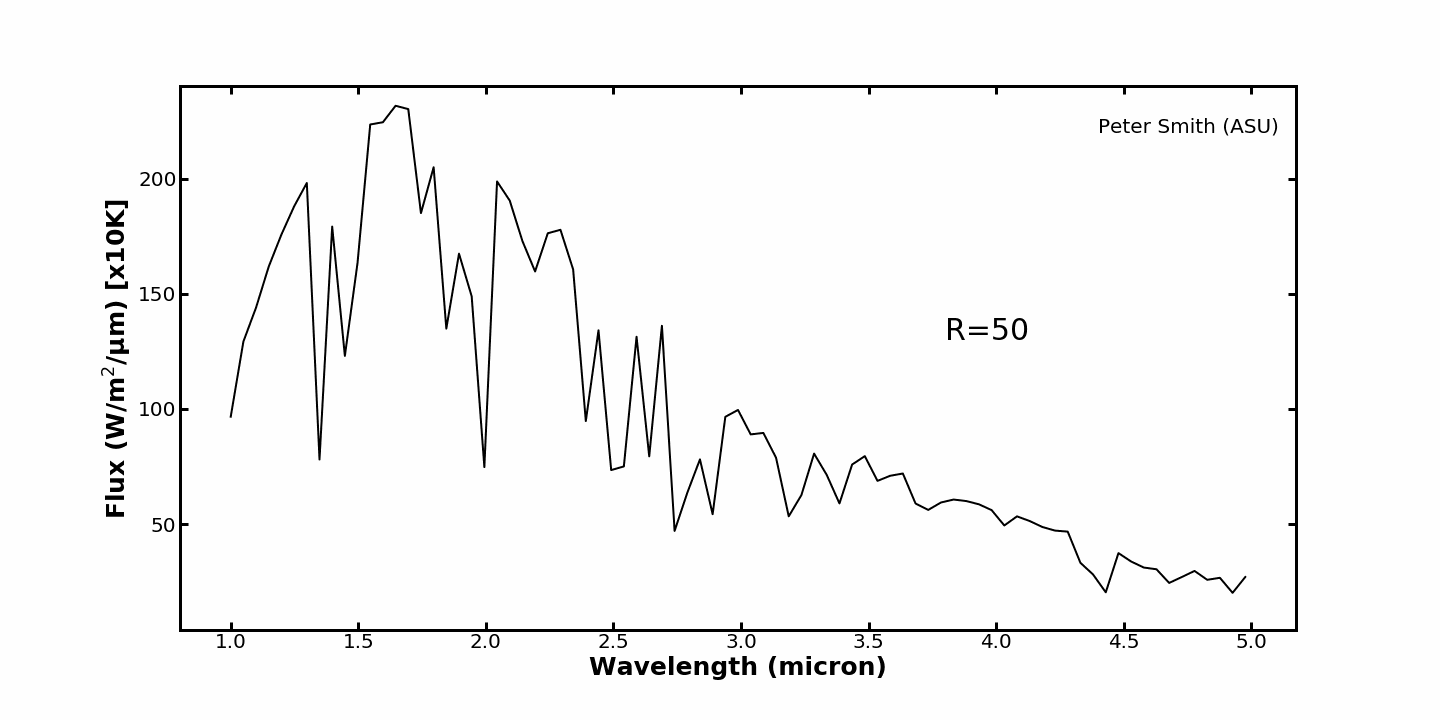
Varying Spectral Resolution
Spectral resolving power (R) is a measure of how many different wavelength bins an instrument can split light into. Higher resolution allows us to resolve more molecular lines and characterize exoplanets in more detail.
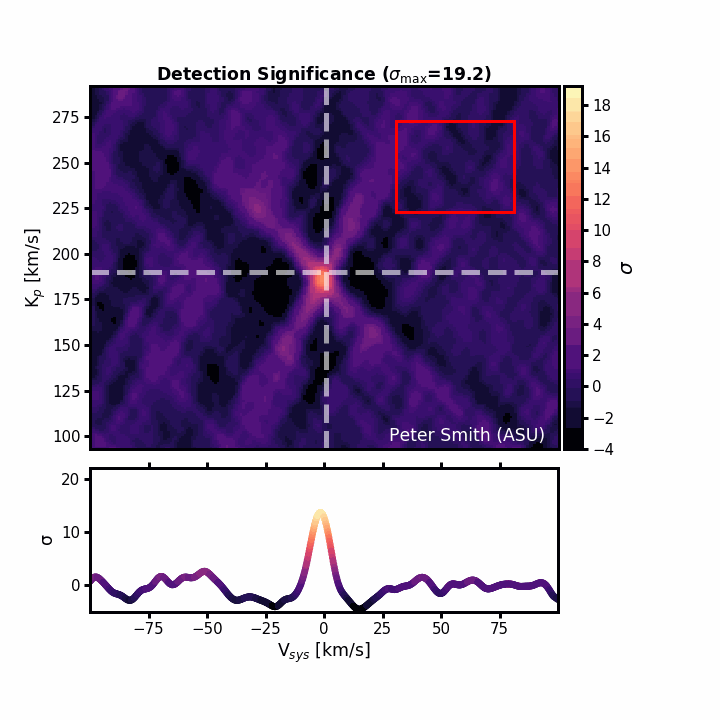
Cross Correlation Map
To get the planet signal out of the post-PCA noise, models are cross-correlated at various potential planet velocities. Typically, we vary the system velocity (how fast the star-planet system is moving away from us) and the planet's orbital velocity to create 2D cross-correlation maps. By normalizing these maps by the standard deviation of a region of this map, we can estimate the signal to noise of the planet signal. However, the choice of the region to normalize to can have a large impact on the SNR.
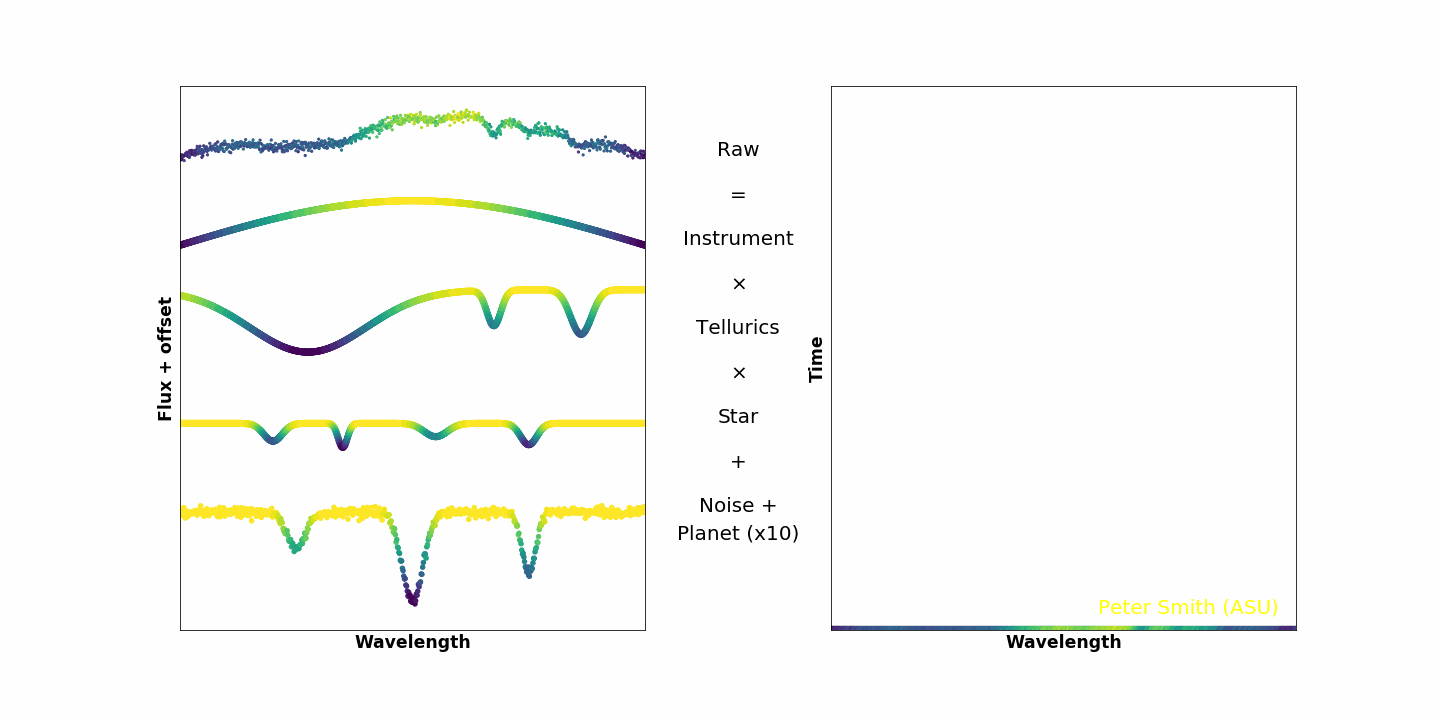
Principal Component Analysis
One of the methods we use to separate the planet signal from the telluric and stellar signals is Principal Component Analysis (PCA). PCA splits a stacked time series of spectra into its main components. For ground based observations, the first components that dominate the spectrum are things like telluric absorption and instrument artifacts. If we remove these, we are left with residual noise, and because it is so faint and varying in time, the planet signal will still be there buried in the noise.
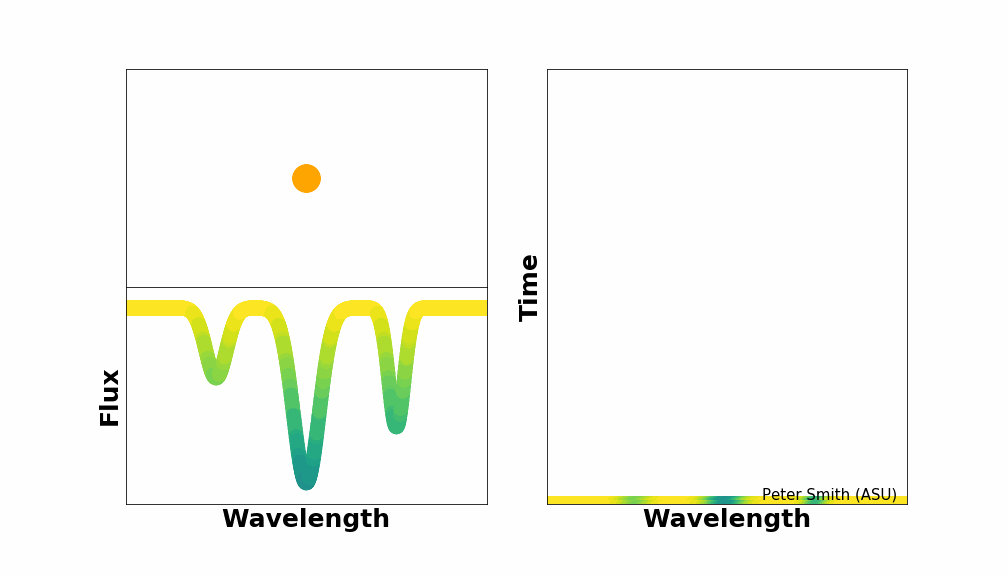
Planet Doppler Shift
Planet signals are constantly Doppler shifting over time as they orbit their star. By stacking spectra in time, we can use this fact to separate the planet signal from the stationary telluric and stellar signals that dominate observations from the ground.

Orbital Resonance
Three bodies in 1:2:4 orbital resonance. The gravitational pull of other bodies in the same system can destabilize orbits, but objects in orbital resonances near integer ratios can keep each other's orbits stable.
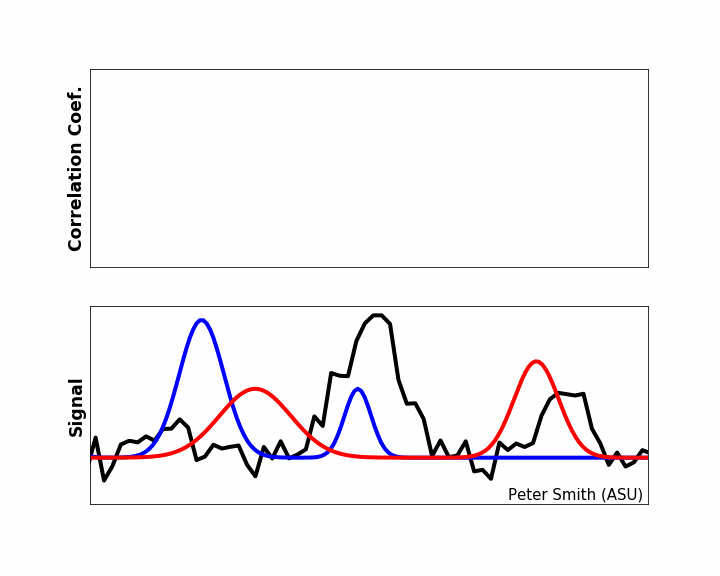
Cross Correlation
After processing high resolution time series spectra with PCA, the explanet signal is buried in residual noise and has to be "teased out" by correlating models with the noise. At high spectral resolutions, we are very sensitive to small shifts in velocity, and by extension, wavelength, so models are typically shifted by a range of potential velocities. The correlation peak will occur at the "true" velocity of the planet.
